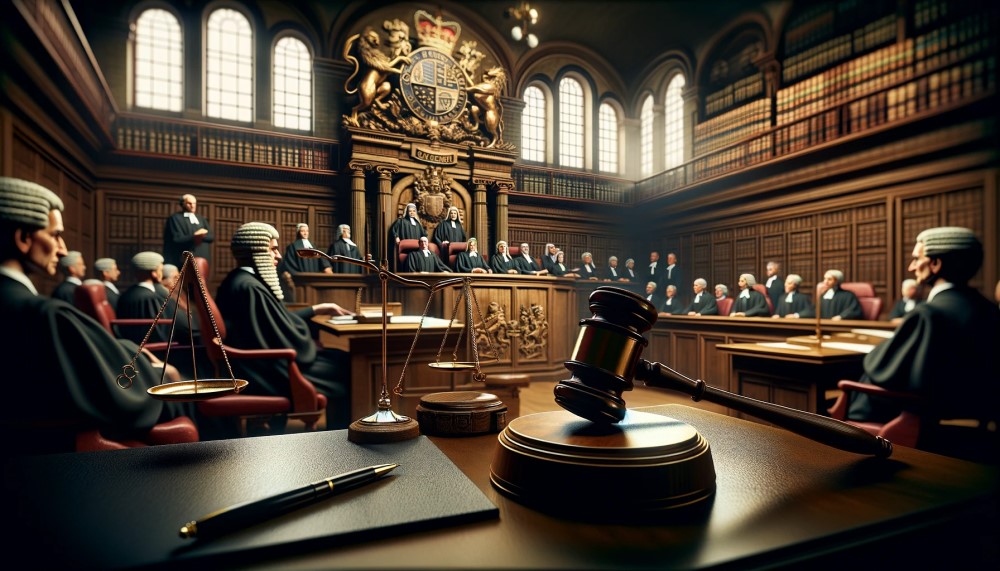Navigating the Key Stages of a Crown Court Trial in England
Understanding the stages of a Crown Court trial in England is essential for anyone involved in the legal process. This detailed blog outlines each step in a Crown Court trial, shedding light on the procedural complexities of the English legal system.
Stages of a Crown Court Trial: Arraignment and Plea

The first stage of a Crown Court trial is the arraignment. This critical phase involves formally reading the charges to the defendant and asking for their plea. How the defendant pleads, either guilty or not guilty, significantly influences the subsequent proceedings.
A guilty plea may lead to immediate sentencing, while a not guilty plea will result in the trial moving forward.
Stages of a Crown Court Trial: Jury Selection
Following the arraignment is jury selection, officially termed empanelment. This process is vital in ensuring a fair and unbiased trial. Prospective jurors are chosen from a pool, often involving a vetting process to ensure impartiality and that they reflect a broad cross-section of society.
The goal is to form a jury capable of providing a fair verdict based solely on the evidence presented.
Stages of a Crown Court Trial: Opening Statements
After jury selection, both the prosecution and defence present their opening statements. These initial remarks are crucial, as they lay the groundwork for each side’s argument.
The prosecution typically outlines the charges and evidence against the defendant, while the defence aims to cast doubt on the prosecution’s case and set the stage for their counterarguments.
Stages of a Crown Court Trial: Presentation of Evidence

The trial’s main phase is the presentation of evidence. The prosecution starts by presenting its case, calling witnesses, and introducing physical or documentary evidence. The defence then has the opportunity to cross-examine these witnesses, challenging the prosecution’s evidence.
After the prosecution’s case, the defence presents its evidence and witnesses, which the prosecution can likewise cross-examine.
Stages of a Crown Court Trial: Closing Arguments
Closing arguments follow the presentation of evidence. This is the last chance for both sides to persuade the jury. These arguments are critical, as each side summarizes the evidence and legal arguments, reinforcing the strengths of their case and highlighting the flaws in the opposing side’s presentation.
Stages of a Crown Court Trial: Judge’s Summing Up
After the closing arguments, the judge sums up the case for the jury. This involves providing an impartial summary of the evidence and clarifying the legal principles relevant to the case.
The judge’s summing-up is crucial in guiding the jury in their deliberations, ensuring they understand the law and how it applies to the evidence presented.
Stages of a Crown Court Trial: Jury Deliberation and Verdict

The jury then retires to deliberate on a verdict. This stage is the culmination of the trial, where the jury reviews the evidence in the context of the legal instructions provided by the judge. The goal is a unanimous verdict, but in some cases, a majority verdict may be accepted if unanimity can’t be reached.
Stages of a Crown Court Trial: Sentencing
If the defendant is found guilty, the trial moves to the sentencing phase. The judge determines the appropriate sentence based on various factors, including the nature and severity of the offence, the defendant’s past criminal record, and any mitigating factors that might influence the sentence’s severity.
Stages of a Crown Court Trial: Possible Appeal
Finally, there is the opportunity for an appeal. If the defence believes that a legal error significantly impacted the trial’s outcome, they can appeal the conviction, the sentence, or both. The appeal process is a critical component of the justice system, ensuring that trials are conducted fairly and according to the law.
Conclusion: Key Stages of a Crown Trial

A Crown Court trial in England comprises of several key stages, each with its own importance and complexities. From arraignment to potential appeals, understanding these stages is crucial for anyone navigating or involved in the English legal system.
Thank you for reading this post, don't forget to subscribe!
Notice: Informational Content Disclaimer
The content provided on this website, including articles, blog posts, and other informational materials, is intended for general informational purposes only. It is not intended as, and should not be considered, legal advice.
Visitors to this website should be aware that the information presented here is not a substitute for seeking legal advice from a qualified solicitor or legal professional. Each individual's legal situation is unique, and the information provided may not be applicable to specific circumstances.
If you require legal advice or have specific legal questions, we encourage you to contact us directly. Our experienced team of solicitors is here to assist you with your legal needs and provide tailored advice to address your concerns.
Please be advised that any communication through this website, including the use of contact forms or email, does not create a solicitor-client relationship. Confidential or time-sensitive information should not be sent through this website. To establish a solicitor-client relationship and discuss your legal matters in detail, please contact us for a consultation.
We strive to provide accurate and up-to-date information, but we make no representations or warranties regarding the accuracy, completeness, or suitability of the information contained on this website. We shall not be liable for any reliance placed on the information provided herein.
Thank you for visiting our website. We look forward to the opportunity to assist you with your legal needs.




